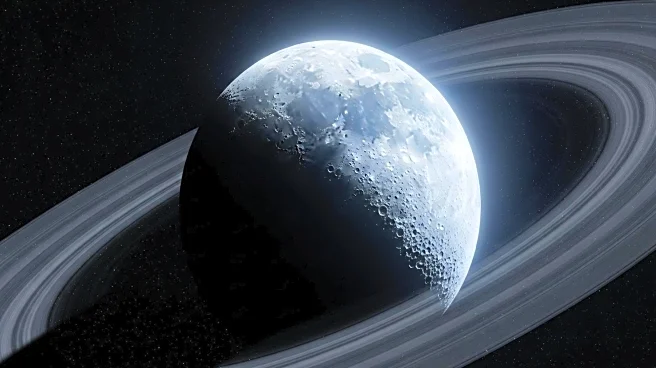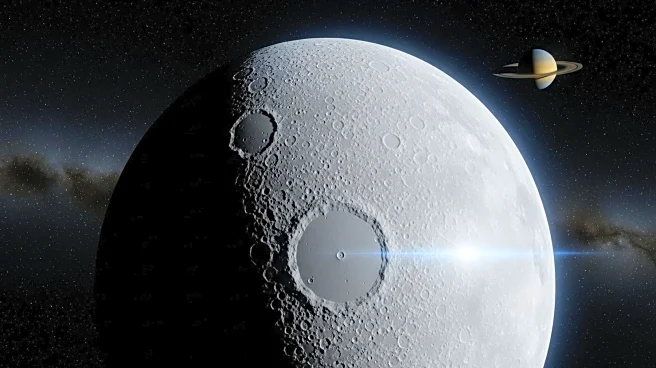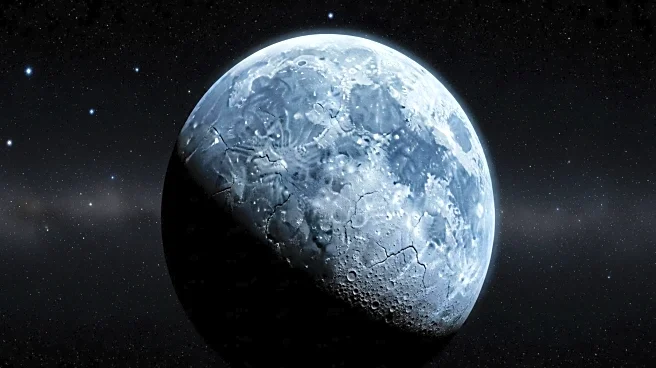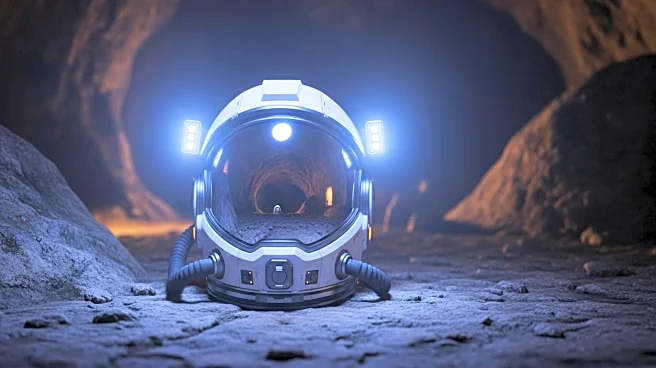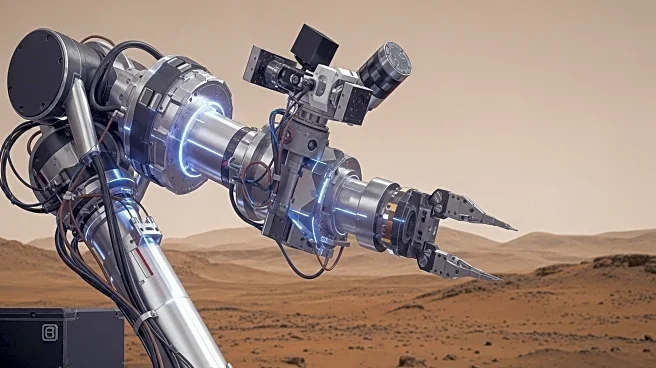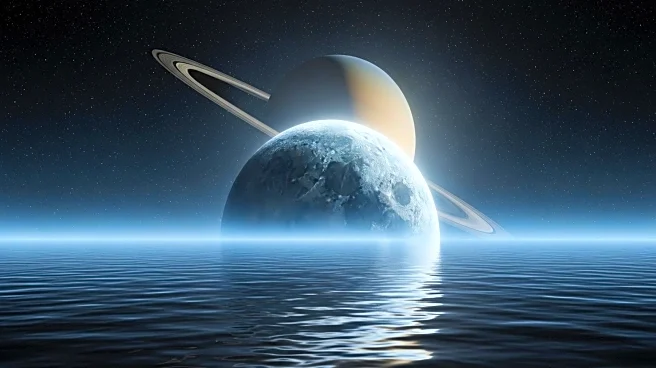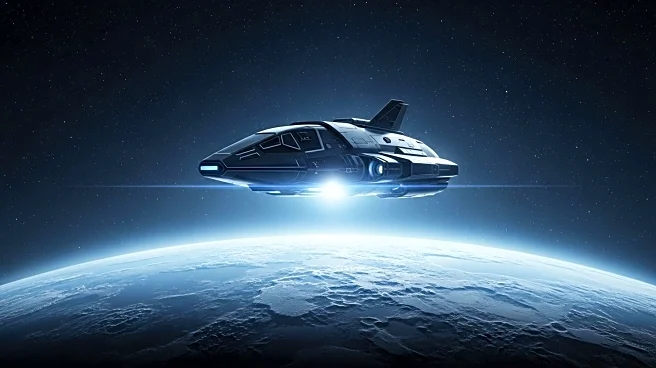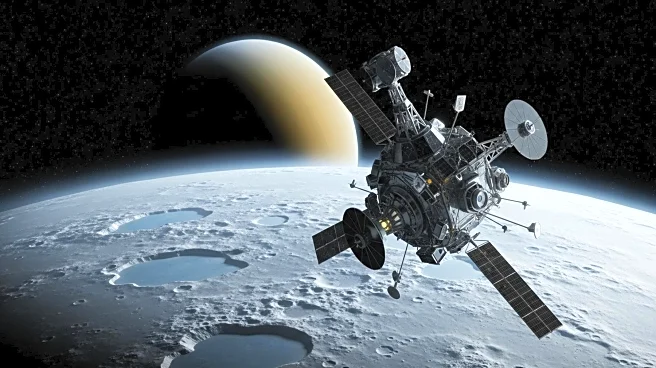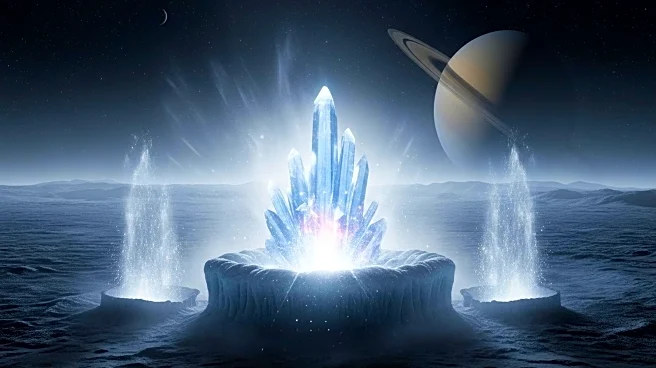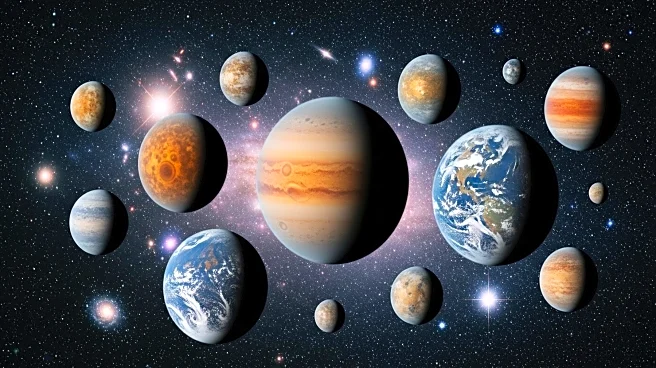What's Happening?
Recent research suggests that Saturn's moon Mimas may contain a young subsurface ocean beneath its icy exterior. Data from NASA's Cassini spacecraft initially hinted at this possibility, and new thermal and orbital models have strengthened the case. Changes in Mimas' orbit likely generated internal heat through gravitational tides, melting parts of the icy shell within the last 10 to 15 million years. Despite its heavily cratered surface, liquid water may exist beneath 12 to 19 miles of ice.
Why It's Important?
The discovery of a subsurface ocean on Mimas could redefine our understanding of ocean worlds in the solar system. It challenges the notion that such moons must exhibit surface features indicative of liquid water. This finding could have implications for the search for extraterrestrial life, as subsurface oceans are considered potential habitats for life. It also highlights the dynamic nature of celestial bodies, even those previously thought to be geologically inactive.
What's Next?
Future missions may aim to detect the hidden ocean directly, possibly through orbiters equipped with advanced sensors. These missions could provide more detailed information about Mimas' internal structure and the extent of its ocean. Continued research may also explore the moon's geological history and the processes that led to the formation of its subsurface ocean.
Beyond the Headlines
The study of Mimas emphasizes the importance of revisiting assumptions about celestial bodies. It suggests that even seemingly inactive moons can harbor complex geological processes, prompting a reevaluation of criteria used to identify ocean worlds.
